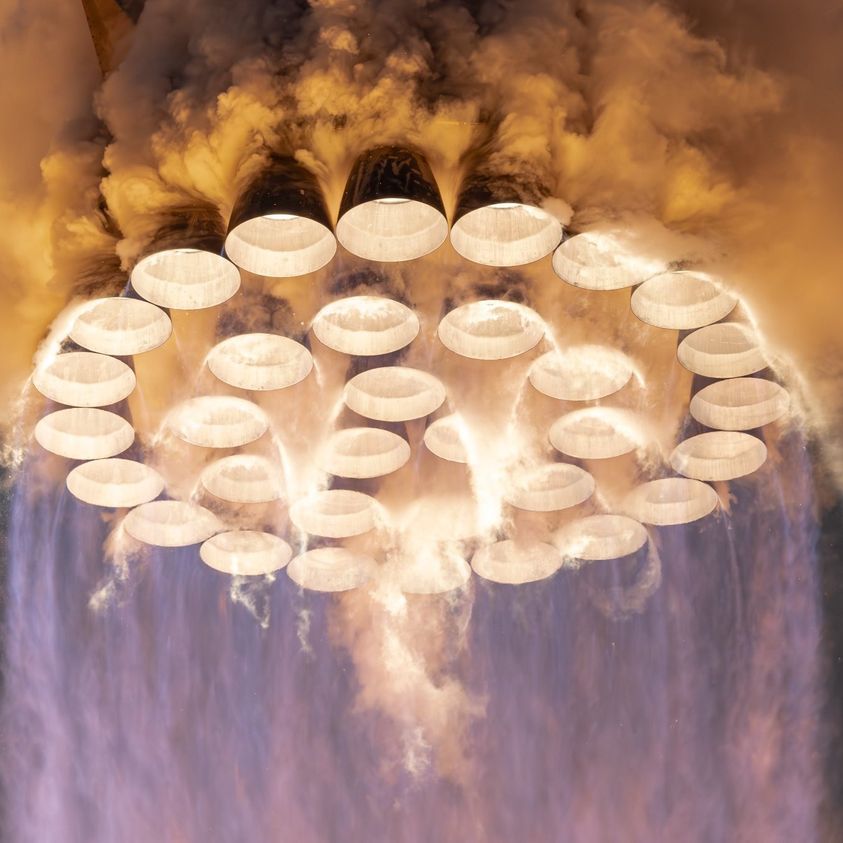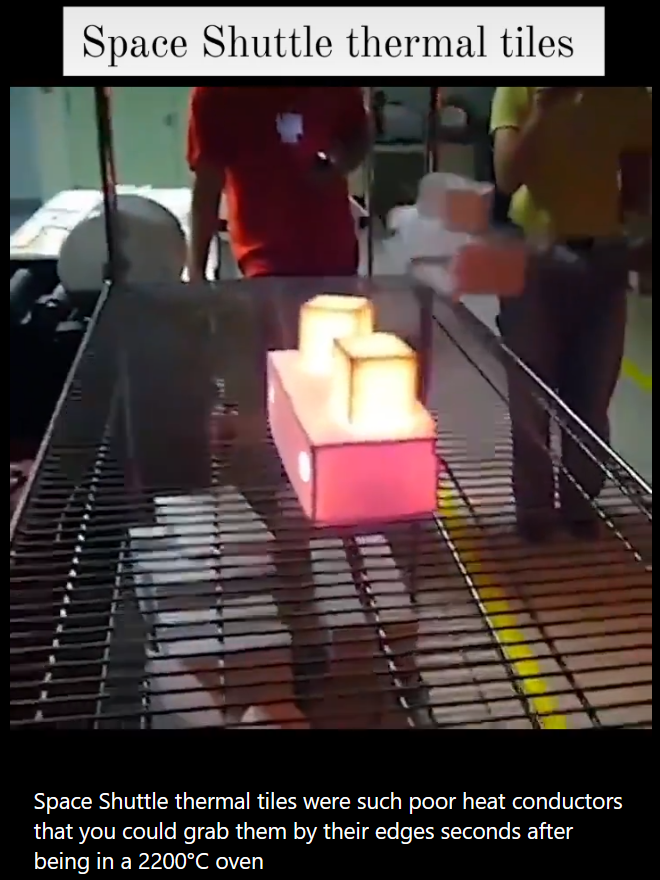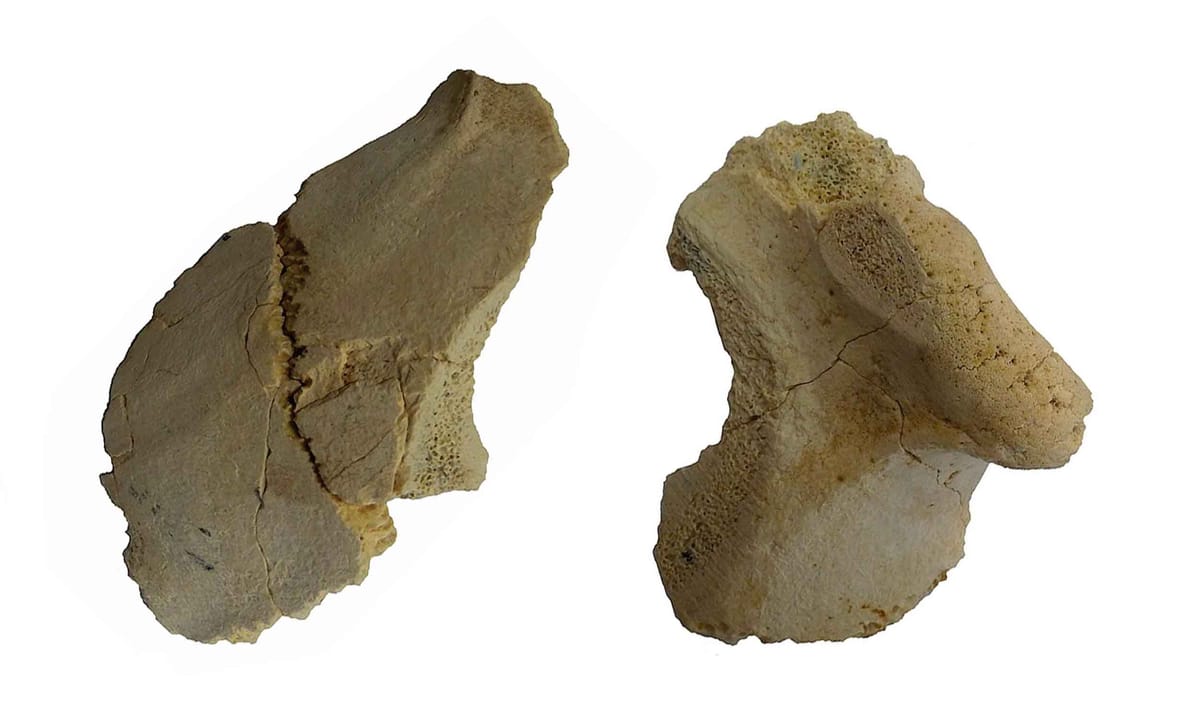The Official Cool Stuff Thread
-
Starship’s 33 Raptor engines in full power (from FB: Science for Astronomy)

-
-
@HardwareGeek I thought I recognized that, but I was mistaken. It's just similar.

-
@HardwareGeek said in The Official Cool Stuff Thread:
https://www.facebook.com/share/r/HA4Tjx6PXG13uQGg/?mibextid=wslSxG

Seen few days ago in Megastructures. While visiting NASA chap was showed the fabrication process, including the baking. Cubes go out bright yellow-orange, while speaking they cool, going grey near the corner but still noticeably orange at the face center. NASA guy tells, yeah, you can take in your hand now, speaker looks one or two times as asking "are you serious?" And finally grabs the cube.
Impressive.
-
-

-
@TimeBandit would have been more believable if they said you would see Jesus.
-
-
-
-
@Arantor For an online version, you can telnet to mapscii.me. It works with the mouse and everything!
-
Smart Every Day - eclipse
-
@dcon Watching on my phone, I literally can't see anything, even when there's an arrow pointing right at whatever I'm supposed to be looking at.
 Hell of a lot of lens flare, though; J J Abrams would be proud.
Hell of a lot of lens flare, though; J J Abrams would be proud.
-
@HardwareGeek said in The Official Cool Stuff Thread:
@dcon Watching on my phone, I literally can't see anything, even when there's an arrow pointing right at whatever I'm supposed to be looking at.
 Hell of a lot of lens flare, though; J J Abrams would be proud.
Hell of a lot of lens flare, though; J J Abrams would be proud.Even on a large monitor, I missed it the first time.
Spoiler
It is a satellite. And he's issued a challenge to the Space Force (specifically, to the cadets as a "test") to determine exactly which one.
-
-
@boomzilla But only to 3. With 4, they have already problems.
Because 3 is the number, thou shalt count to three,,,
-
Electro-mechanical pinball machines:
https://www.youtube.com/watch?v=XeDCCNFAULkLast in a series of 3 (?) videos; links to the earlier videos in the description.
-
Comment under that video:
Had a pinball machine growing up. It was SO loud I only played when no one was home. Got home from school and it was gone. I asked why my parents sold it. "No one plays it."
-
@dcon the "something unknown" bit is pretty cool. And the picture he took is very, very nice. It probably looks fantastic once framed on a wall.
But man, huge
 when he spends minutes explaining how to do a multi-exposition shot on a non-digital camera, and wondering "how on earth can you not advance the film?"
when he spends minutes explaining how to do a multi-exposition shot on a non-digital camera, and wondering "how on earth can you not advance the film?"I remember my brother taking a very similar shot (sunrise from his bedroom window IIRC), with what was at the time a medium-price camera (the kind of things a teenager could get his hands on). There was absolutely nothing fancy in not advancing the film, not bumping the camera between shots etc. In fact, what was fancy was when cameras starting advancing the film by themselves rather than having to do it manually (and forgetting once in a while and getting double-exposition of unrelated scenes...)!
-
@remi I have as many
 s as anybody here, but I don't think I ever used a camera that cocking the shutter and advancing the film weren't the same operation. It required intentional action to not advance the film, and there was no guarantee that the film wouldn't move slightly between exposures, so that the two were slightly mis-aligned.
s as anybody here, but I don't think I ever used a camera that cocking the shutter and advancing the film weren't the same operation. It required intentional action to not advance the film, and there was no guarantee that the film wouldn't move slightly between exposures, so that the two were slightly mis-aligned.Thinking about it, I vaguely remember having a camera that had a lever to cock the shutter that was separate from the knob to wind the film, but it was old and obsolete (and maybe broken) even in my early childhood. I'm pretty sure I never actually took any pictures with it; it was just a pretend toy for me.
Further thinking brought up the memory of the camera I rented while taking a photography class in college. It was a field camera. It had a lever or something on the lens to cock the shutter, but there was no film advance mechanism at all. When you had the photo composed the way you wanted, you closed the shutter, inserted a holder containing a single sheet of (8"x10", in this case) film, withdrew the dark slide (thin sheet of metal that blocks light from hitting the film), triggered the shutter, inserted the dark slide again, and removed the film holder. The film holders were, IIRC, double-sided, so the trick was remembering which piece of film was already exposed and which was fresh. IIRC, the dark slide was a different color on each face, so when you inserted it after exposing the film, you flipped it over, so you could tell which film you had already used by the color. Or something like that. There was some kind of indication, but it was entirely manual; it was up to you to keep track of which pieces of film you'd already exposed. If you wanted to double- (or more) expose film, it was easy.
Also, the English term is multi-exposure, not multi-exposition. It took me a moment to figure out what you were talking about.
-
@HardwareGeek said in The Official Cool Stuff Thread:
I don't think I ever used a camera that cocking the shutter and advancing the film weren't the same operation.
I have a vague memory of my very first camera being some sort of almost a toy (there was absolutely no setting you could change and it used some unusual small format film roll that only held half a dozen pictures or so). I'm almost certain that, being 100% manual (everything was cheap plastic), there was a wheel to advance the film which was separate from the shutter. Though I do not have any memory of ever failing to advance (or doing it voluntarily) so I think there was some trick that prevented the shutter from opening if the film had not been advanced.
My parents had a relatively high-end (for complete amateurs) camera where you had to advance manually though. And I think when they bought a new one (which did advance automatically, and also had an auto-focus IIRC!) they gave the old one to my brother, and that's the one he used for years. We had a couple of simpler cameras as years went by that all had auto-advance, so really it was just that old one that didn't. But it still was a noteworthy feature, even if all cameras had it.
There was no way to know if you had advanced the film, so we (my parents) had a "home rule" that you always advanced the film immediately after having taken a picture. This way the camera was always ready for the next one. If you wanted to do a multi-exposure (thanks!), that was a special case anyway as you needed to fix the camera (my parents never had a tripod, my brother brought one when he got the camera). Nothing prevented you from double-advancing and I think that happened a couple of times. I don't think the camera could go back, though in theory with the winding mechanism (see below) you probably could, but I guess there was no accurate measuring of movement with that. The newer camera that auto-advanced had a feature to specifically not advance, I think (something like a small toggle) but I don't think my parents ever used it (I was too small and almost never allowed to use that camera).
Also I remember winding the film when inserting a new one. You inserted the film in the camera on one side (left or right, can't remember and it probably varied from camera to camera?), hooked the film into some sort of spindle on the other side (right or left, so that the film spanned the camera width and the shutter), closed the camera and winded a small lever to get all the film out of the cassette (?) and onto the fixed spindle. Then as you took pictures the film was rolled back into the cassette, which meant the film ended up all there when finished, and also if you ever opened the camera before the film was entirely used, the part that had been used was protected inside the cassette, so you could still develop it normally.
More recent cameras had an auto-winding mechanism, but like auto-advancing that was a new-ish feature. We loved inserting a new film (or rather, watching our parents do it!) and listening to the camera whirring for 30s or so while it rewound the film. Manually rewinding on the old camera was much less fun, it didn't make a fun sound and the winding handle was too small and fiddly.
 How many bathrooms have Neanderthals in the tile?
How many bathrooms have Neanderthals in the tile?

